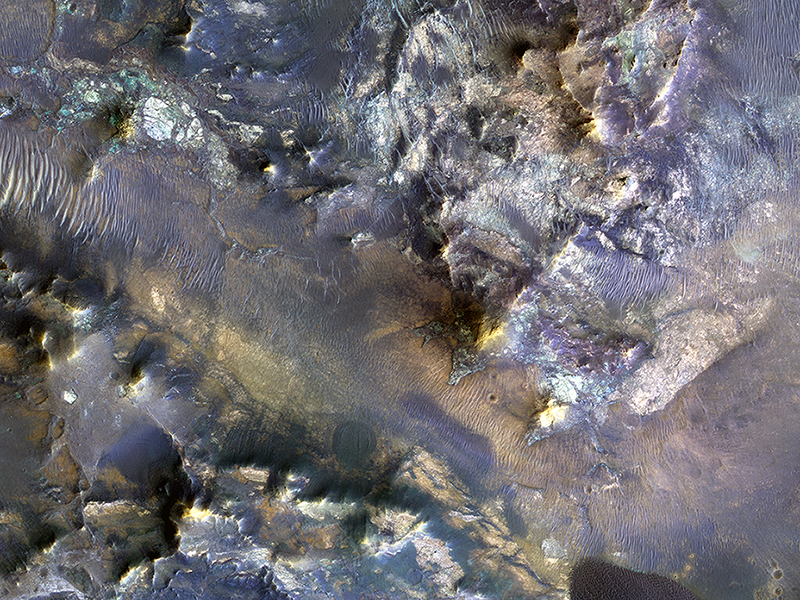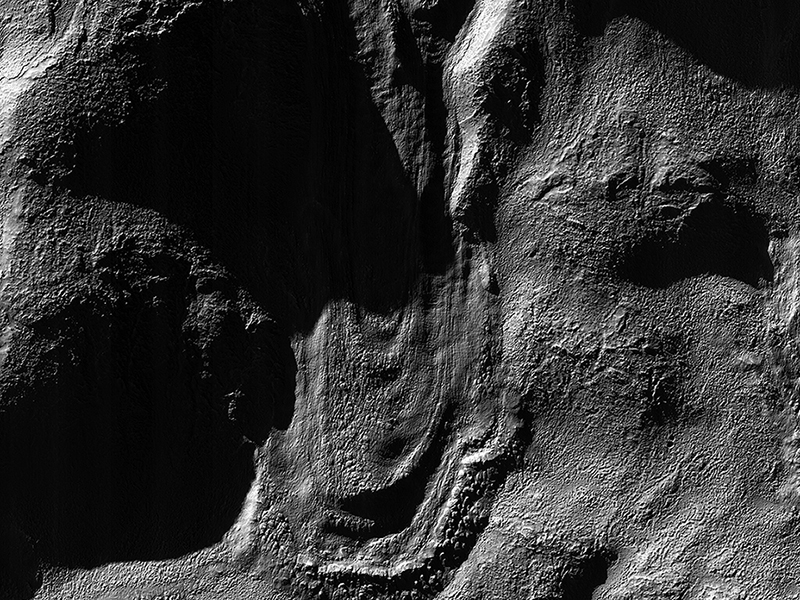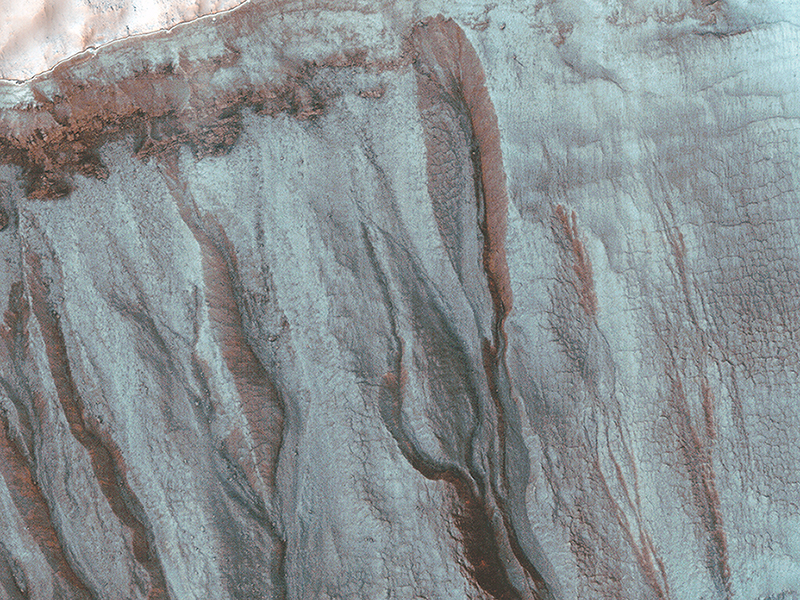Candy Hansen wrote:Summer Sand Dunes (ESP_044088_2640) (HiClip)
Mars’ permanent North Polar cap is ringed by sand dunes. In the winter and spring the dunes are covered by a seasonal cap of dry ice.
Here, we see the dark dunes in the summer, bare of seasonal frost. Two classic barchan dunes march across the rugged terrain. The long dark dune is crossing transverse aeolian ridges probably formed in a previous climate regime.
Sharon Wilson wrote:Colorful Hargraves (ESP_044161_2005) (HiClip)
Hargraves Crater is located on the northwestern margin of Isidis Basin, a region that hosts many proposed future Mars landing sites such as nearby Jezero Crater and the Nili Fossae trough.
This image covers the ejecta along the southern margin of Hargraves and shows an impressive variety of rock types, as indicated by the range in color diversity.
Alfred McEwen wrote:Dramatic Shadows over a Fossil Glacier (ESP_044193_1430) (HiClip)
This image was acquired near the Martian winter solstice, when the sun was low over the horizon at this location.
The resulting illumination produces dramatic accentuation of subtle topography. The image is centered on a fossil glacial flow, no longer active. On Earth, glaciers usually melt, but on frigid Mars they may be preserved for millions of years after ceasing activity. It formed on the south-facing slope of an impact crater in the southern middle latitudes.
Alfred McEwen wrote:Frosted Gully Slopes in Shadows (ESP_044327_1375) (HiClip)
At first glance, this image looks like a mistake because the gullies of interest are entirely hidden in a large shadow filling most of the crater. At this latitude, gullies preferentially form on pole-facing slopes, but these slopes are in shadow during northern spring and summer.
This image was acquired just after the northern winter solstice, when Southern hemisphere shadows are longest. However, the fine dust in the Martian atmosphere scatters light into the shadows, and HiRISE has the sensitivity to acquire useful images within shadows.
The bluish areas are covered by seasonal carbon dioxide frost. In fact, this frost is key to forming the gullies. A good deal of carbon dioxide condenses in the shallow subsurface, and when it warms up in the late winter, it produces pressurized gas. When this gas escapes it fluidizes loose rocky materials on these steep slopes forming debris flows.
Initially this was considered a type of secondary activity, but we now realize that this activity can fully explain the formation of the fresh-looking gullies on Mars. The HiRISE team monitors sites such as this through the winter to better understand the actively-forming gullies.
Credit: NASA/JPL-Caltech/University of Arizona
<< Previous HiRISE Update



